On July 14, the EU Commission is set to unveil the first part of its eagerly awaited “Fit for 55” package, meant to provide the EU climate and energy policy framework to reach the recently adopted emissions reduction target for 2030. With a 55% target for reductions in greenhouse gas emissions, even though lower than the EU Parliament’s proposed 60% target, the timeframe to ensure that the EU reaches it is tight.
This means that we have to harness any shovel-ready technologies and solutions that can decarbonise energy end-uses immediately. Electrification then seems like the ideal pathway for many sectors such as road transport, especially as the EU electricity mix has been decarbonising swiftly. EuropeOn has already voiced its support for electrification as a key strategy to meet this target and for the need to #ElectrifyNow with like-minded stakeholders of the Electrification Alliance.
A full range of measures aiming to decarbonise several segments of the EU economy is poised to be presented on July 14 and will be followed by additional proposals later in the year. As we have grown accustomed to, a working draft of one of these measures, the Renewable Energy Directive (RED), has already leaked online. This draft presents a revision of the RED that was adopted in 2018 and has just reached its transposition deadline on 30 June 2021.
Indeed, the new RED draft was actually leaked before the transposition deadline of the previous RED and the content has not dramatically evolved. While it does set a new EU target for renewables in the EU energy mix of 38% – 40% by 2030, up from the previous target of 32%, NGOs and trade associations had called for higher ones, up to 45% – 50%. Additionally, this is still only binding for the EU as the draft lacks any binding targets for individual Member States.
This draft however contains a new provision aimed at “Facilitating system integration of renewable electricity” that is to a great extent aimed at electro-mobility. It emphasises the flexibility potential of EV batteries (and other storage systems) by requesting that Member States assess this potential and possibly ramp up infrastructure deployment to reach it. It also opens up access to battery data and charge point operation to third parties, as was called for by EuropeOn. This is a key provision to ensure competitive energy service markets that enable electrical SMEs to contribute to a consumer-centric energy transition.
The 2018 provisions on “Information and training” have been slightly expanded and refocused to further address the shortage of skilled workers for renewable heating and cooling installations. While it is indeed critical to secure a sufficient number of e.g. heat pump installers to meet climate targets, this effort cannot stop at one technology. While solar energy is included in this provision, this needs to be expanded to all clean energy technologies. And, in light of the need to #ElectrifyNow and according to our #Skills4Climate campaign, EuropeOn believes electrified prosumer installations need to be addressed holistically. As the prosumer model has the potential to turn our buildings into a climate and energy resource rather than a problem. But this hinges on the availability of enough qualified personnel. The EU Commission could, in this regard, start by assessing the availability of the needed personnel qualified to carry out the implementation of their policies.
However, renewable electricity in transport might be unfairly harmed by the removal of a multiplier that allowed for renewable electricity to be counted multiple times in Member States’ RED compliance. Given its superior efficiency over other fuels, electricity must keep its multiplier to ensure the most efficient and feasible pathway to transport decarbonisation.
This RED draft also gives a definition for smart charging, bidirectional charging or domestic batteries, which were expected in more transport-focused such as the Alternative Fuels infrastructure Directive (AFID).
The revised AFID will also be proposed along the aforementioned measures in the 14 July legislative package. The latter could even be proposed as a Regulation, which would enable this legislation to be directly in effect without any transposition into national law. Such a move would be a welcome turn of events for the booming e-mobility segment, which is currently suffering from a patchwork of frameworks for charging across Europe and a highly uneven distribution of the public charging network (most of the latter are in north-western Europe).
EuropeOn, along with a set of stakeholders of the e-mobility value chain, has called on the Commission to turn the AFID into a regulation ahead of its planned proposal on 14 July.
We are looking forward to the presentation of an ambitious “Fit for 55” package, endowed with the regulatory strength to make the EU’s climate targets a reality.
